Bengali Adventure on Adivasi Land: India's Largest Coal Mine
'We are not sure what will happen. Will they drop us in a river?'
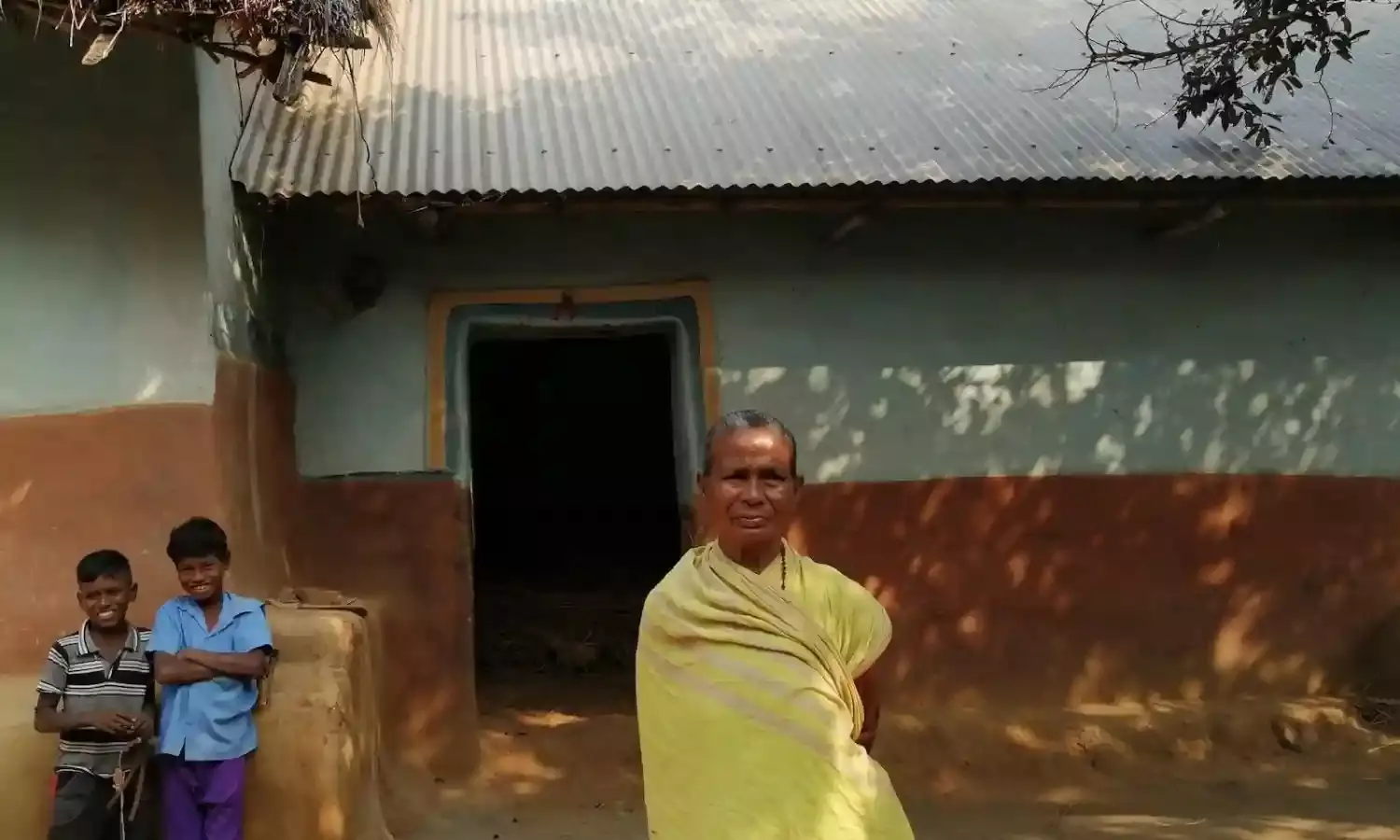
“We will not leave our village. We don’t want anything from the government. Food, shelter, education, whatever they plan to offer us, we will not take anything. We will not leave our home and village,” says Maharani, a 65 year old resident of Dewanganj in West Bengal’s Birbhum district.
Dewanganj is one of 19 villages that fall in the Deocha-Pachami and Dewanganj-Harinsingha coal blocks that the government has decided to excavate. The blocks comprising an area of 3,400 acres are thought to contain 2.1 billion tonnes of coal. Once operational, the proposed coal mine will be India’s largest and the second largest in the world.
The West Bengal Power Development Corporation Limited, which was allotted the block by the Ministry of Coal in December 2019, has identified 3,010 households for rehabilitation. But even the decade-old census found that this area is home to over 21,000 people from 4,400 households, nearly 12,000 of them from Schedule Tribe or Schedule Caste communities.
Chief minister Mamata Banerjee has announced a rehabilitation package worth Rs 10,000 crore, but thousands of people fear eviction. Anxiety and apprehension have incapacitated the region’s mostly Indigenous population, whose lives and livelihoods stand threatened. Meanwhile the state government has begun the groundwork for land acquisition, with the local administration holding camps to check and rectify the land records of residents.
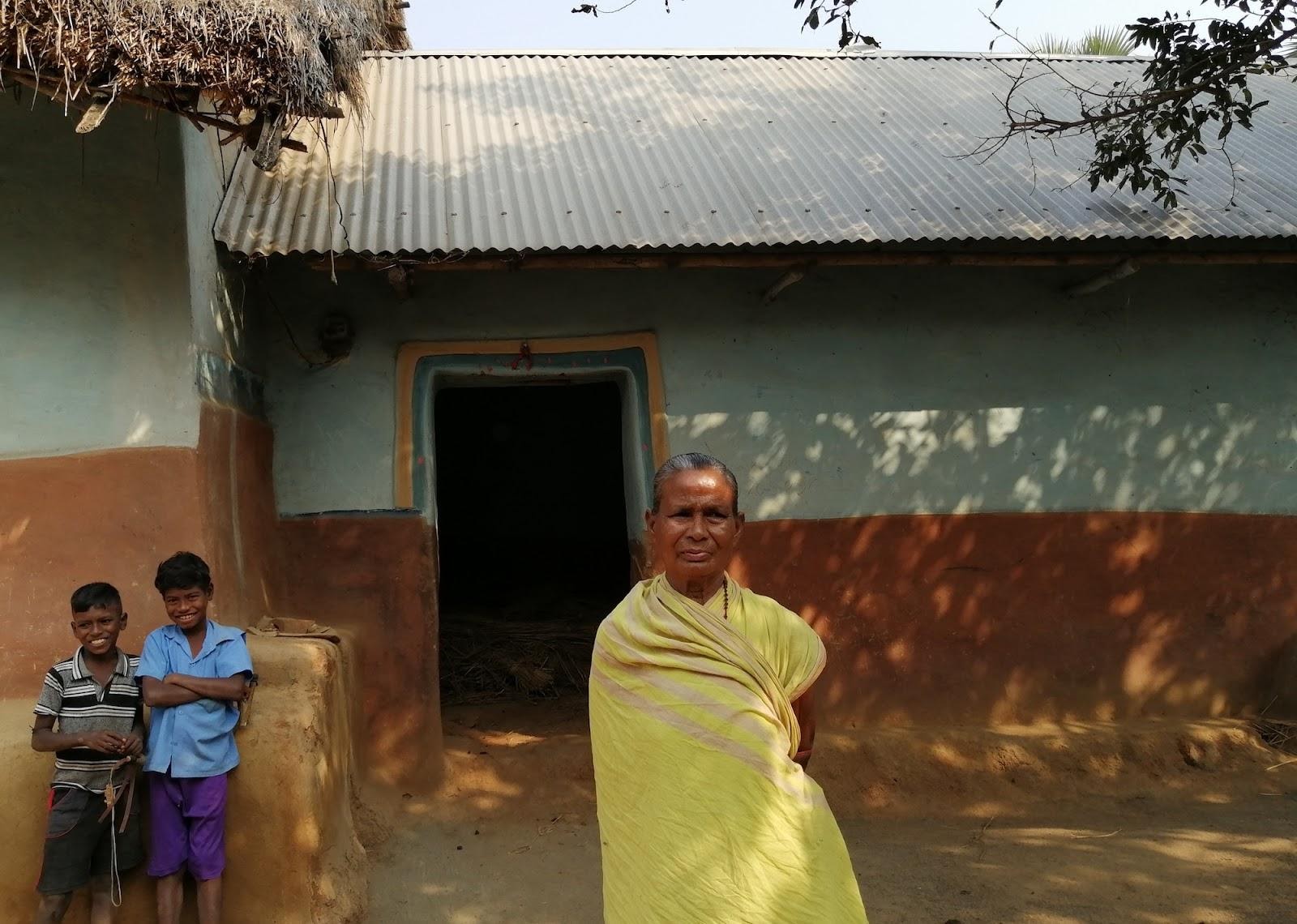
Maharani in front of her home, where she lives with her son and his family of three
Birbhum district magistrate Bidhan Ray also met several representatives of villages and Indigenous organisations, including panchayats, local clubs and representatives of stone quarries and crushing units, on November 20 to inform them of the government’s plan and proposal. But most of the villagers this writer spoke to claimed that they had yet to hear from any official.
“The secretary [state government chief secretary Hari Krishna Dwivedi] had come here and explained about the coal mine. Locals were told about the benefits of the project. The BDO also said many things. But then lots of misinformation is also being circulated, while many treacherous activities have also taken place.
“Amidst all these, Mamata Banerjee announced the rehabilitation package and the DM held a meeting. So people are scared now that the coal mine will start soon and they will be evicted,” says Khokon Mardi, Birbhum district convenor of the Project Affected People’s Association. On December 17, the association submitted a petition signed by 350 residents to the Birbhum district magistrate against the coal mine.
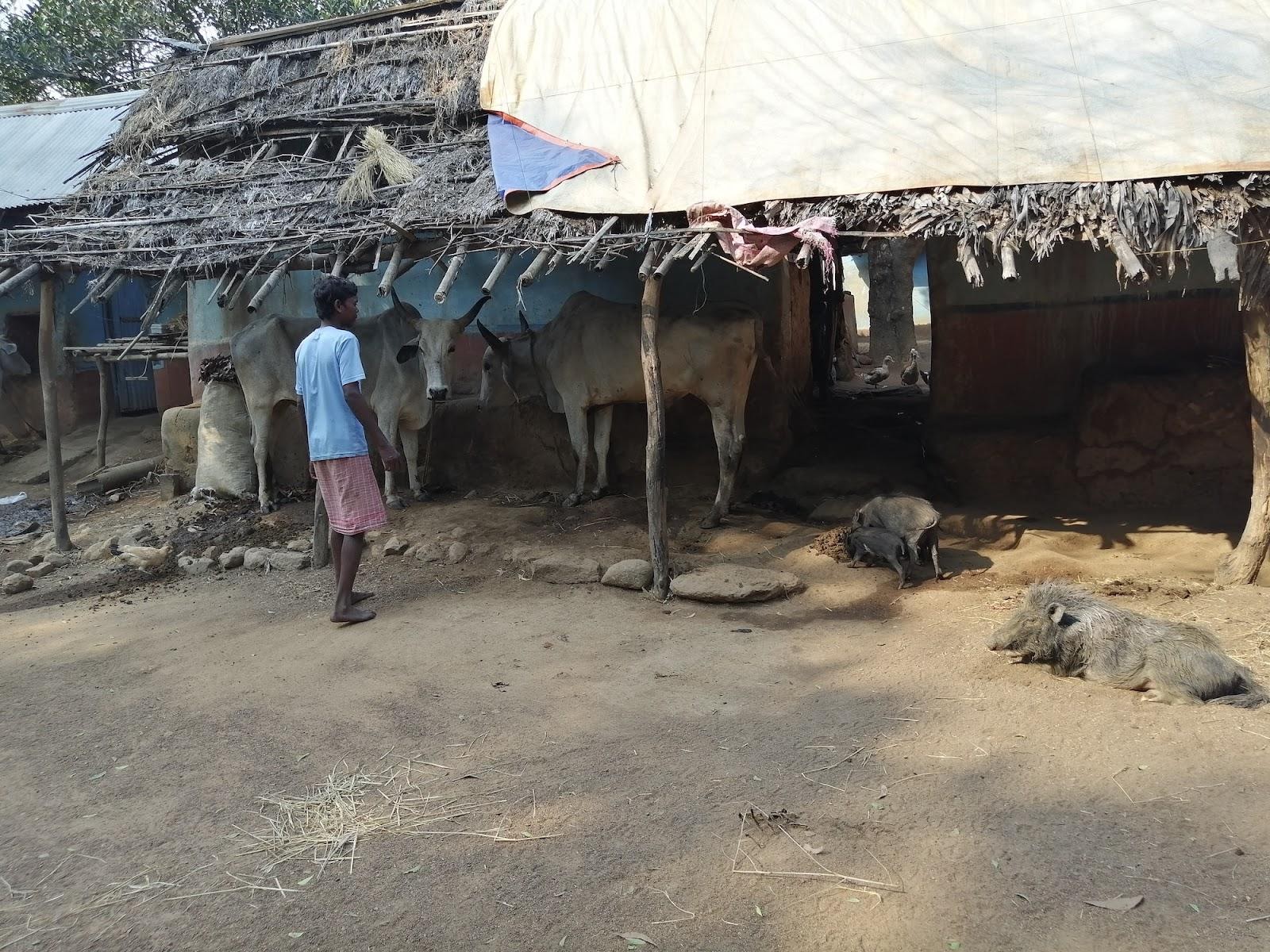
Paru Murmu showing his cattle
“You tell me where do I go at this age? None of us here will leave our village and homes,” Maharani continues, showing me the house that she built on her own after her husband’s demise. Her days are spent growing rice on five bighas of farm land, and she confirms that she and other villagers have heard nothing about the proposed coal mine from the panchayat or the local administration.
Kalu Tudu, another resident of Dewanganj where pakka roads and proper sanitation and drainage are not provided by the state, doesn’t know either what fate awaits him. “We are not sure what will happen. Will they drop us in a river? We know nothing.” But the 45 year old is certain he won’t part with his 12 bigha land. “They can take me wherever they want. But look at these cattle all around, will we be allowed to take them along with us? Even if we are allowed, will we have lands for their grazing?”
“So we have decided that whatever the cost, we will not leave our lands and our home,” says Tudu. He is interrupted by his neighbour Paru Murmu who wants to show his cattle. “They want to transfer me. But I have two oxen, 8-9 cows and so many pigs, hens and ducks. Where will they go?” 20 years old, Murmu says his family owns 20 bigha land in the region where mostly rice and mustard are grown.
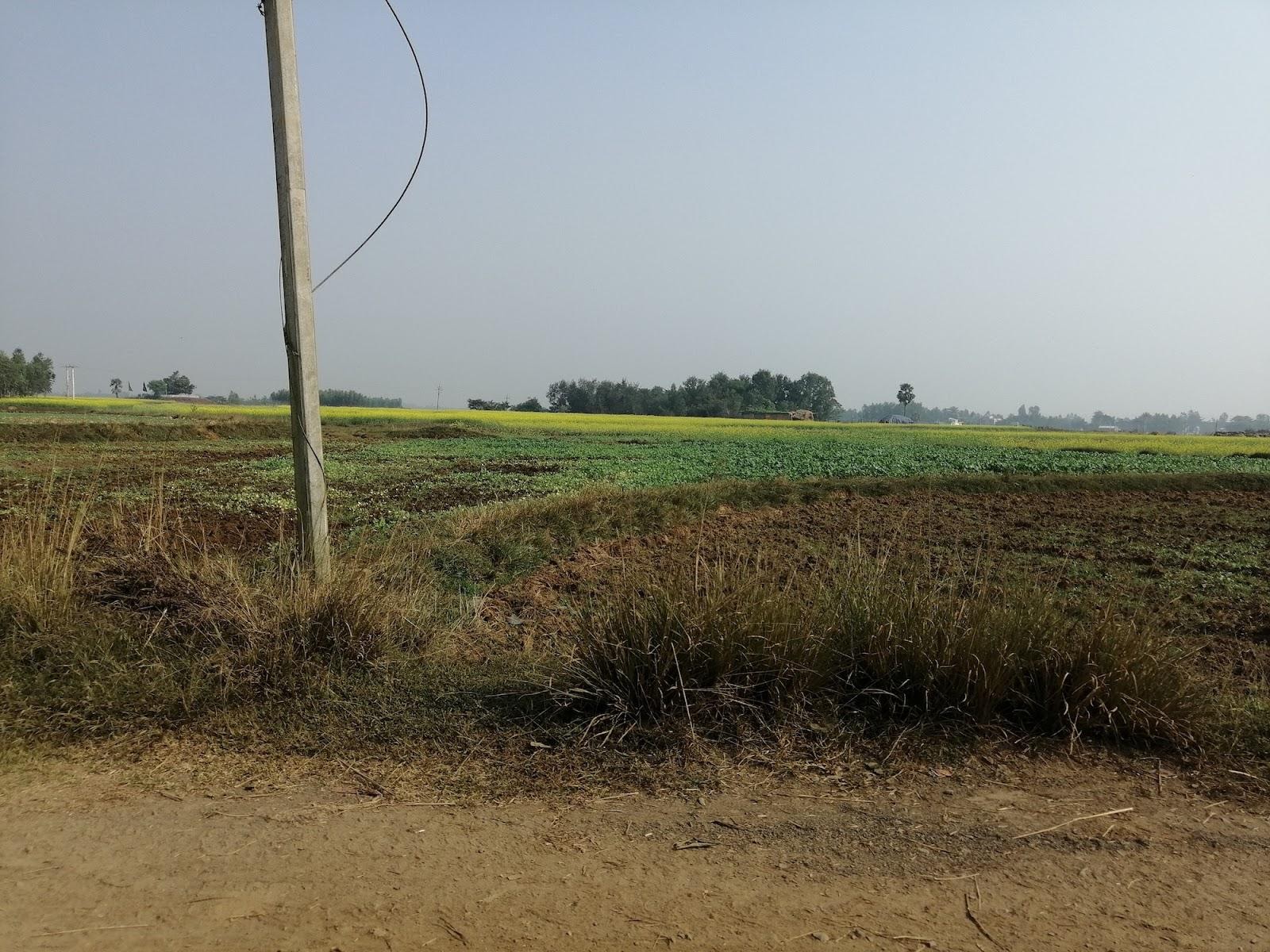
More than 12 sq km of un/inhabited land will be taken for the proposed coal mine
The West Bengal government has declared that landowners will be given Rs 10-13 lakh for each bigha of land that the government takes from them, and a job in the state police department. Almost 5,000 people are to be hired as junior constables in the West Bengal police. In addition, landowners have also been promised a 600 square foot home, and Rs 5.5 lakh for relocation-related expenses.
It also says it has identified some 3,000 workers employed in the region’s stone crushing units, which will be relocated to make way for the mine. The workers have been promised compensation of Rs 10,000 per month for a year. Around 160 agricultural workers are to be recompensed with Rs 50,000 and 500 days of work under the MGNREGA.
But, looking at the 2011 census, the 19 villages in these coal blocks – Deucha, Bahadurganj, Alinagar, Mokdamnagar, Kabilnagar, Saluka, Kendapahari, Tetulband, Nischintapur, Patharchal, Talband, Harinsingha, Harmadanga, Dewanganj, Mathurapahari, Gobarbathan, Barmase, Sagarbandi, Pathaprara and Saldanga – are home to over 2,600 agricultural labourers and almost 4,000 salaried workers, including main and marginal ‘household industry workers’ and ‘other workers’, who will be rendered vulnerable by the proposed coal mine.
The rehabilitation package has raised fears among many, like 60 year old Lalu Soren in Dewanganj. Soren is not sure if he has the proper documents to qualify for compensation. “I am all alone. My son doesn’t stay with me. People are saying that there will be a coal mine here. I don’t know where I will go at this age.”
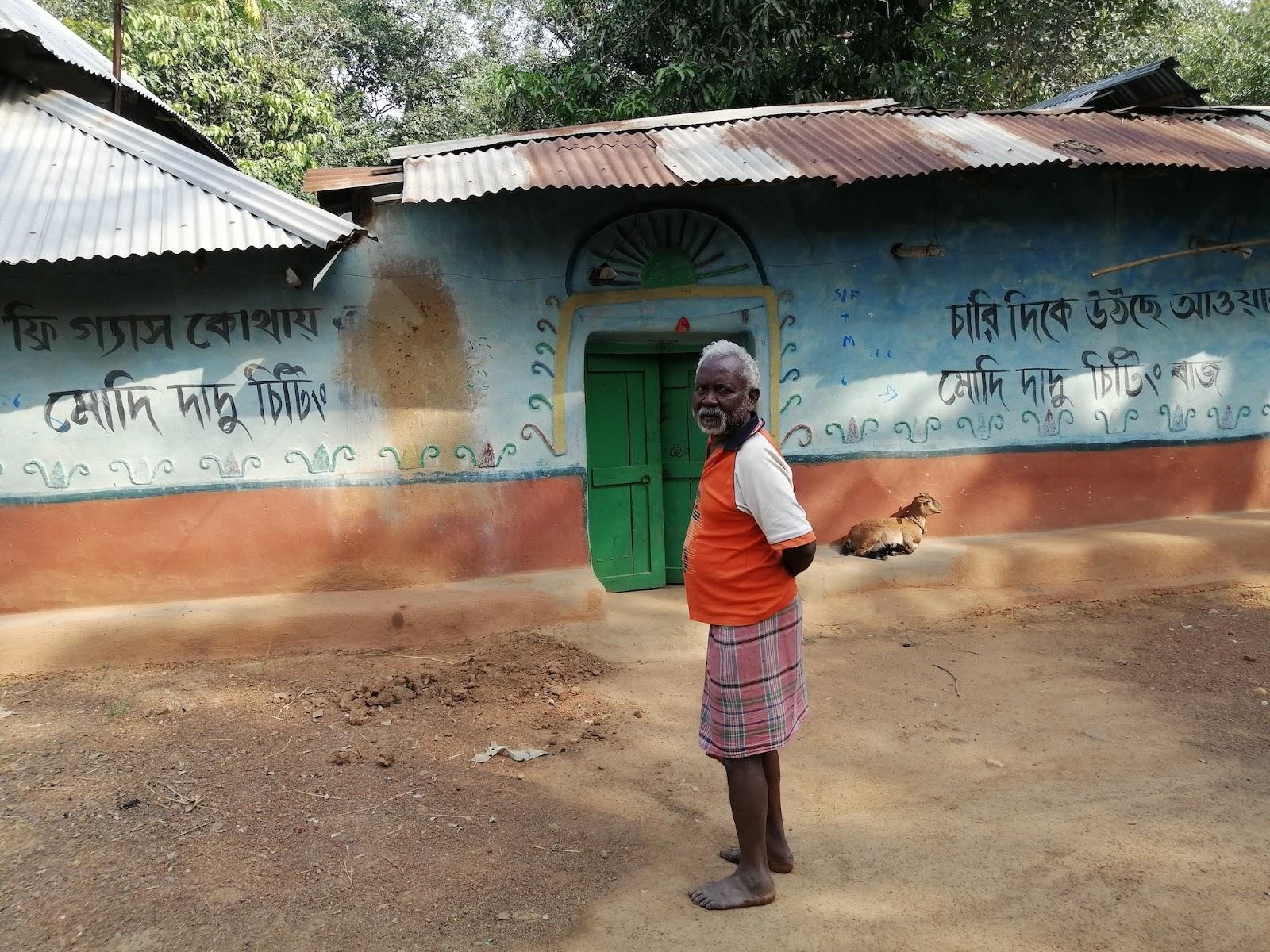
Lalu Soren, 60 doesn’t know if his son will be deemed eligible for a government job
Allegations of foul play were also raised during the social impact assessment survey for the Deocha Pachami coal mine last year. According to media reports, locals in Saluka, Kabilnagar and Makdumnagar mounted a protest saying that the surveyors had skipped “many families that live on government or private land but have no papers”.
Bani Malakar, who runs a small eatery at the Deocha bus stand on a piece of government land with her son, is one such person standing on the edge of doubt. “I don’t really understand what is happening right now. I don’t have anywhere to go. We have been living and running our business on this land for some time now. Hopefully I will sort it out.”
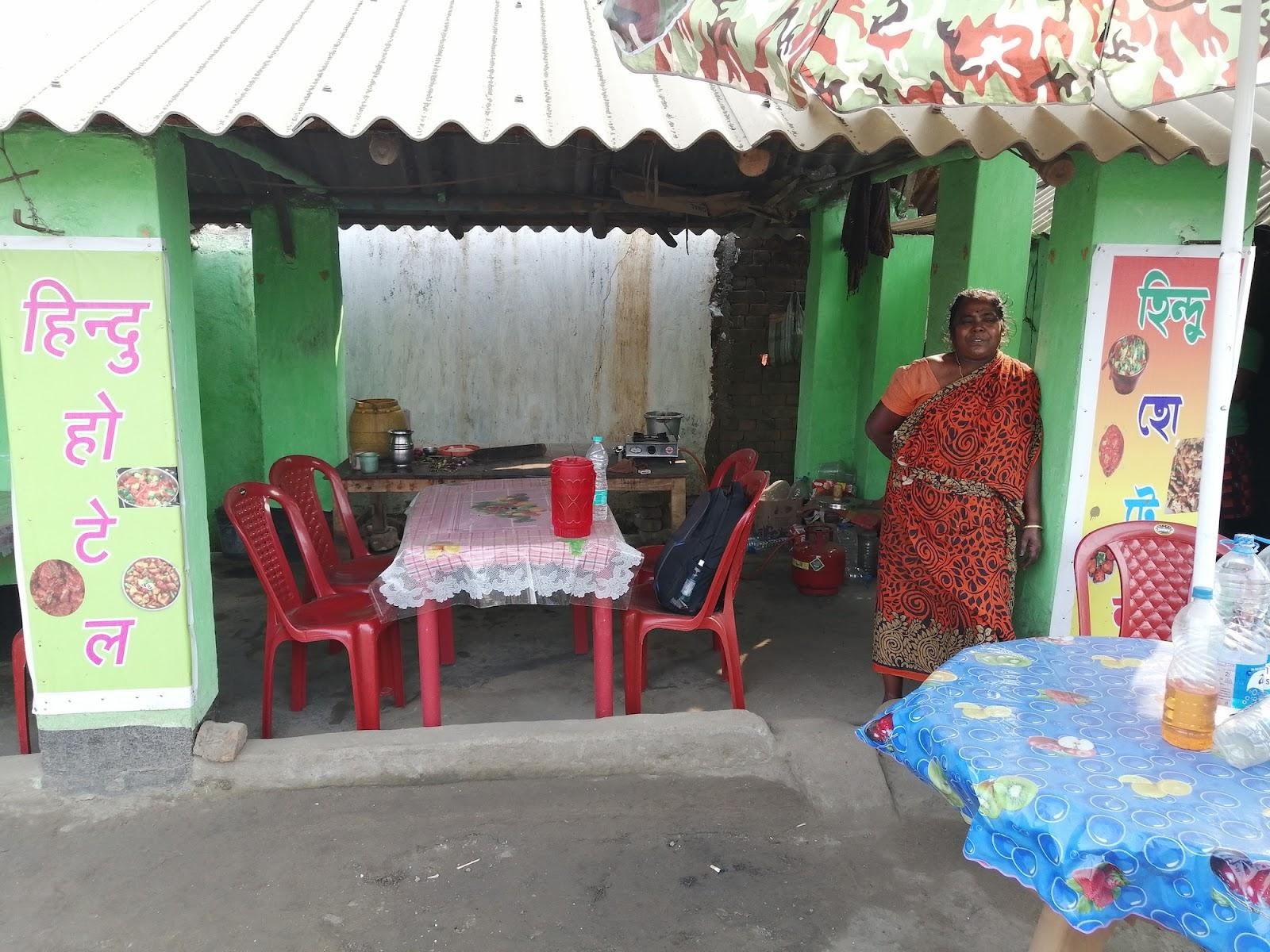
Bani Malakar, 55 started the Hindu Hotel after her husband’s demise
Some residents are content with the coal mine project. Tapas Das, 31, who runs a business in Harinsingha’s Hattala market, which has about 30 shops and a State Bank of India customer service point and caters to people from many nearby villages, said he would willingly give his 10 bigha land to the government “if I get a good package”.
“One can say whatever one wants. But I am not against industry. If such a big coal project takes place, many in this region will get good jobs. I will leave this place if get something good,” says Das. He is supported by fellow shop owner Prosenjit Dutta. “We have not seen a good life here. I am not against industry, but the government must also give good support to people.” 42 years old, Dutta owns 9 bigha land.
Meanwhile, widespread rumours and allegations are being floated against anyone eager to give up their land. “Those who want to give land are either TMC workers or run illegal stone crushing units on their land,” said a shop owner who did not wish to be identified. The owners of around 285 stone crushing units have been promised Rs 50,000 each as well as compensation for building and shed, apart from the Rs 10-13 lakh per bigha land taken by the government.
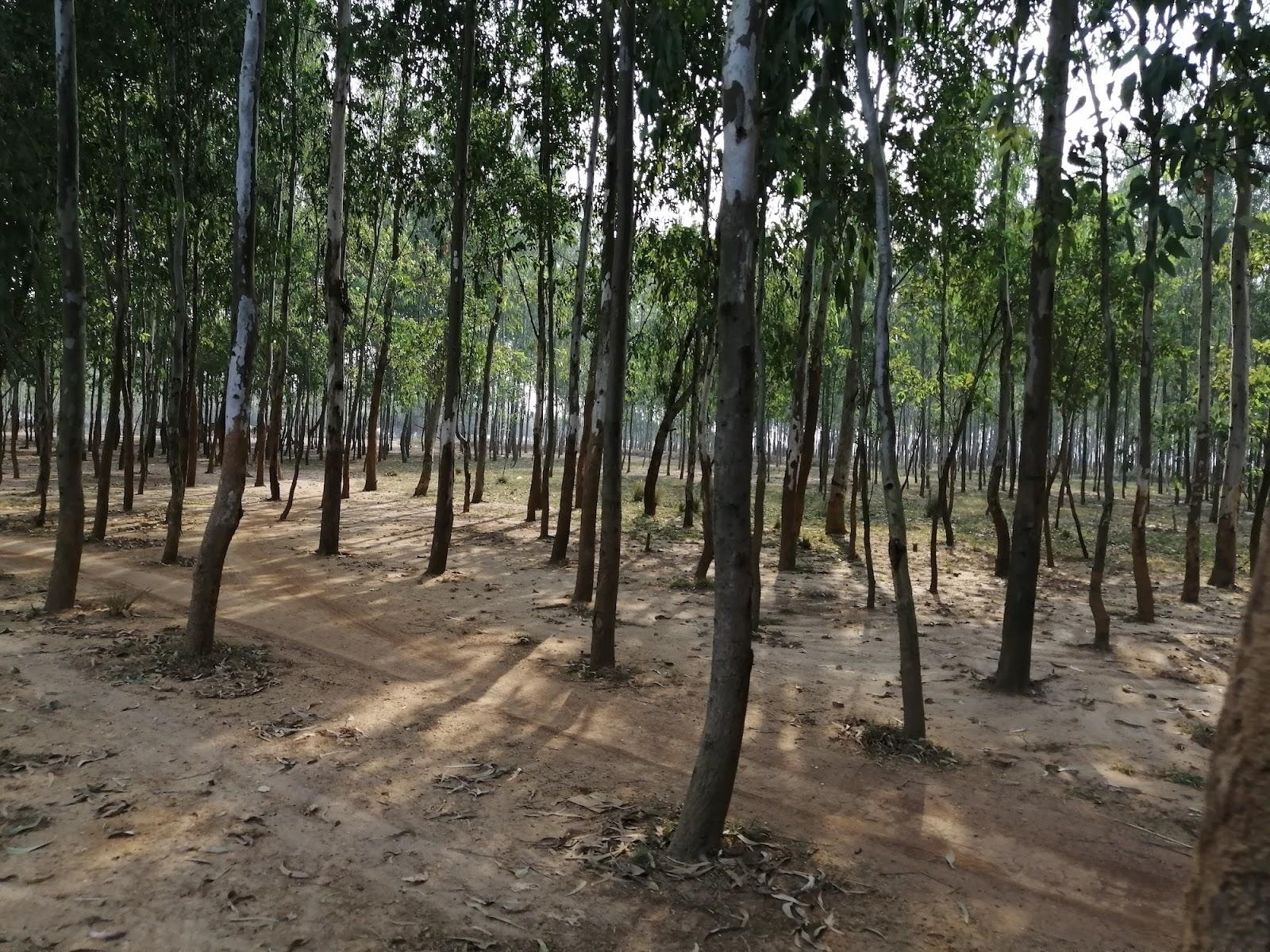
Government land demarcated by a eucalyptus plantation
According to a West Bengal government report, the arid but mineral-rich land of Mohammad Bazar CD block, and the neighbouring Rampurhat and Nalhati blocks have about 400 stone crushing units, of which only 100 are registered as small scale industries. Another report in 2019 quoted a local NGO as saying that there were over 180 stone quarries and 2,000 crushers operating illegally in the region.
This may well be the reason why most of the locals believe that the government’s recognition of 3,000 workers in stone crushing units could be skewed. “Almost all of these stone mining works are illegal. As a result, daily labourers working there have no paperwork to prove employment,” said a resident on condition of anonymity. He lives in Harinsingha village, which lies at the other end of a 20-minute journey, made arduous by a kaccha road with potholes and thick layer of dust hanging in the air, crossed by tuktuk (toto in the local language) from Dewanganj.
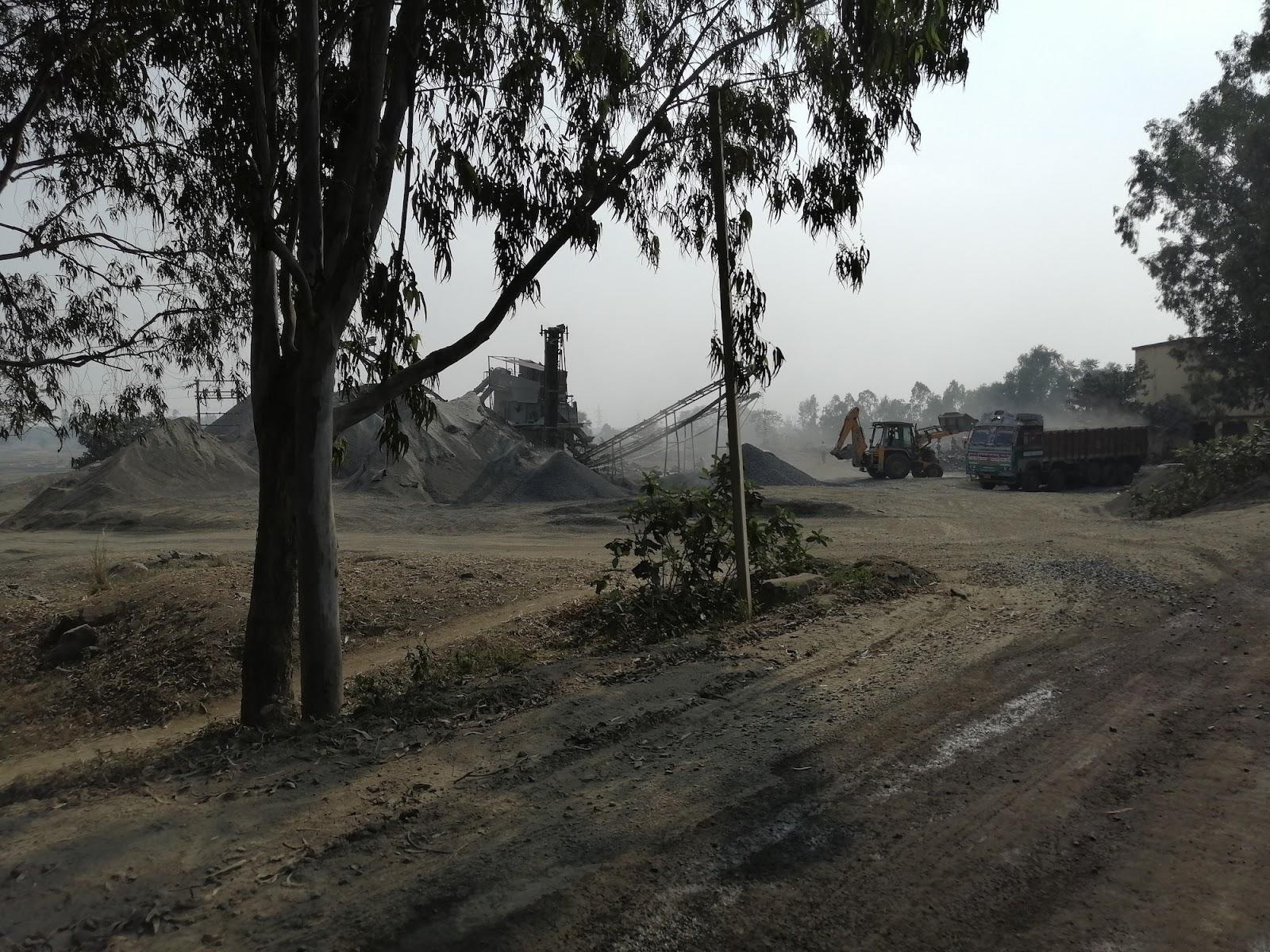
Stone crushers cause widespread pollution in the region
Many of these illegal and unregulated stone crushing units would be shifted to nearby Basalt Industrial Park, according to the state government. For ages they have been a cause for concern. The rampant pollution caused by stone and stone dust, which get mixed in the groundwater as well, and the decreasing water level had compelled local Adivasis to launch protests against unlawful mining through the 2000s. Locals also argue that by lowering the groundwater level in the region, illegal stone quarries and crushing units have forced many to discontinue farming.
In most of these unbridled stone crushers, employees are not provided adequate safety gear, such as masks and eye protectors. Inhaling stone dust, rich in silicates, often leads to silicosis (a lung disease) among employees as well as residents living nearby, said Swaraj Das, a climate activist and member of mines, minerals & PEOPLE, a collective of “individuals, institutions and communities concerned and affected by mining”.
“Since symptoms of silicosis are similar to tuberculosis, doctors in local health centres and government hospitals say people are suffering from tuberculosis. But that is not the case. If diagnosed properly, most of them will be detected with silicosis. Many are left to die on a regular basis by wrong treatment,” says Das.
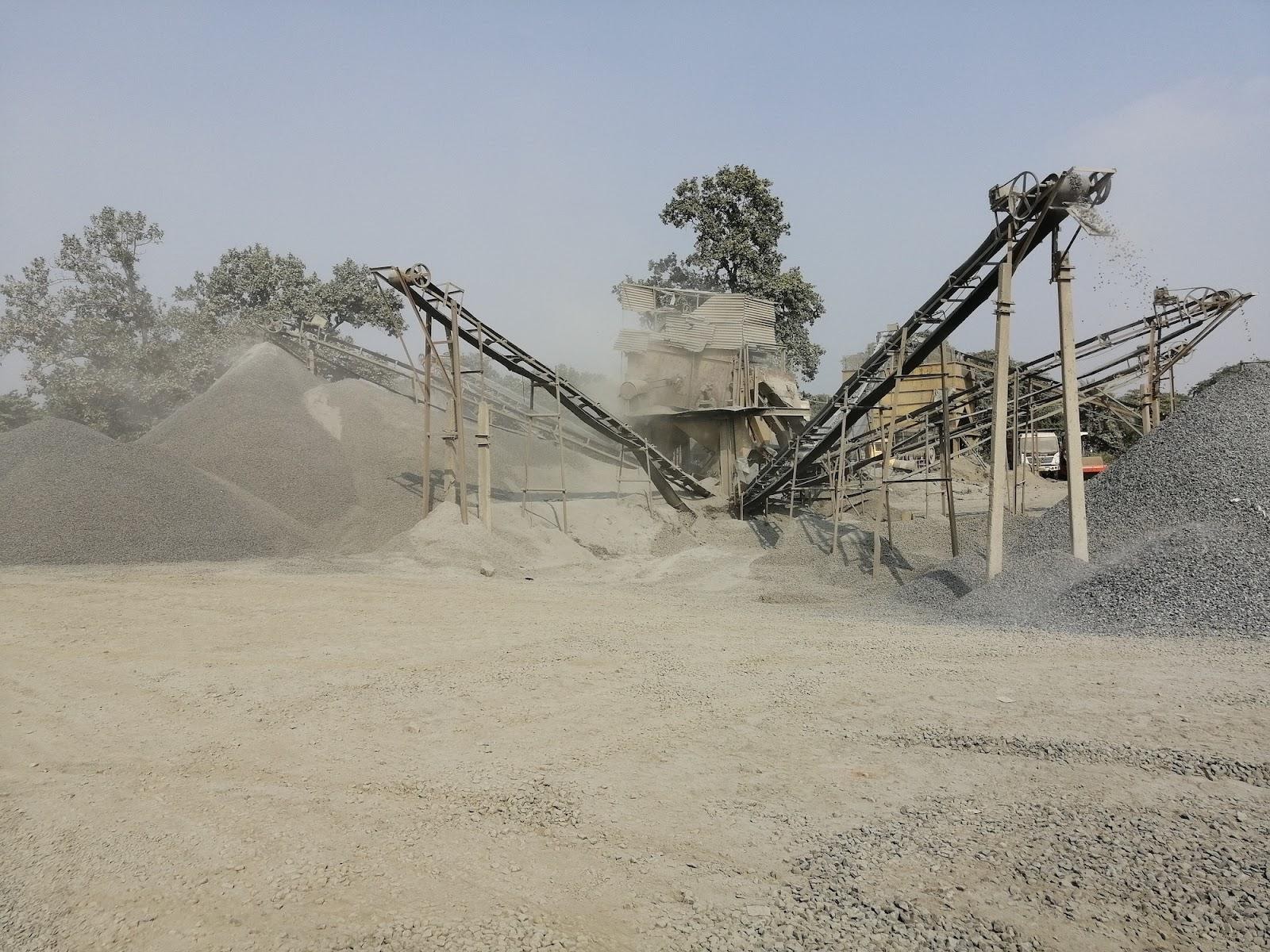
Employees work in these stone crushing units without adequate safety gear
Soon after returning to power for the third time, Chief Minister Mamata Banerjee reportedly instructed concerned officials to begin the first phase of the Deocha Pachami coal mine project on vacant government land. However, a Geological Survey of India report states that more lands, outside the intended area of the mine, would be required for waste disposal. Locals are afraid this might be enough to destroy their livelihood and the local ecology.
A toto driver, who declined to be named, said that drilling shafts on government land would hurt the fertility of neighbouring lands as well. “The water level will go down further and whatever little farming we have here will not be possible,” said the driver, whose 7 bigha land is outside the proposed area of the mine. His argument made sense as unchecked stone mining over the years has already turned the region dry.
While shafts for stone mining are normally dug to a depth of 100-200 metres, the Geological Survey of India (GSI) report states that four coal horizons in the Deocha-Pachami and Dewanganj-Harinsingha blocks were discovered at depths ranging from 136–1,000 metres from the surface. Calling it “a unique type of coal deposit which has no parallel in Indian coalfields”, the report says that all coal seams in Deocha-Pachami and Dewanganj-Harinsingha were under layers of “thin alluvial cover” followed by “very hard basaltic rocks of volcanic origin”.
“In such a situation, though the reserve of coal which is nearly 2 billion tonnes and quite tempting for mining, at least theoretically, for the construction of a large mechanized mine of phenomenal output, this is not easy to mine with the current available technology of both underground as well as opencast mining,” the GSI report further states. Highly thick coal seams such as found here often cause spontaneous combustion in coal mines as well, as has been documented worldwide.
But the government seems unfazed. While it earlier claimed that the public-private partnership model of the Deocha-Pachami coal mine could draw investment of up to Rs 22,500 crore, the chief minister announced in November 2020 that her government would invest around 35,000 crore of public money in the mine. Banerjee also tweeted that the Deocha-Pachami project would “create a model to execute large projects with full public support”. It is ironic that her party rose to power in Bengal riding on the Singur and Nandigram movements against violent land acquisition.
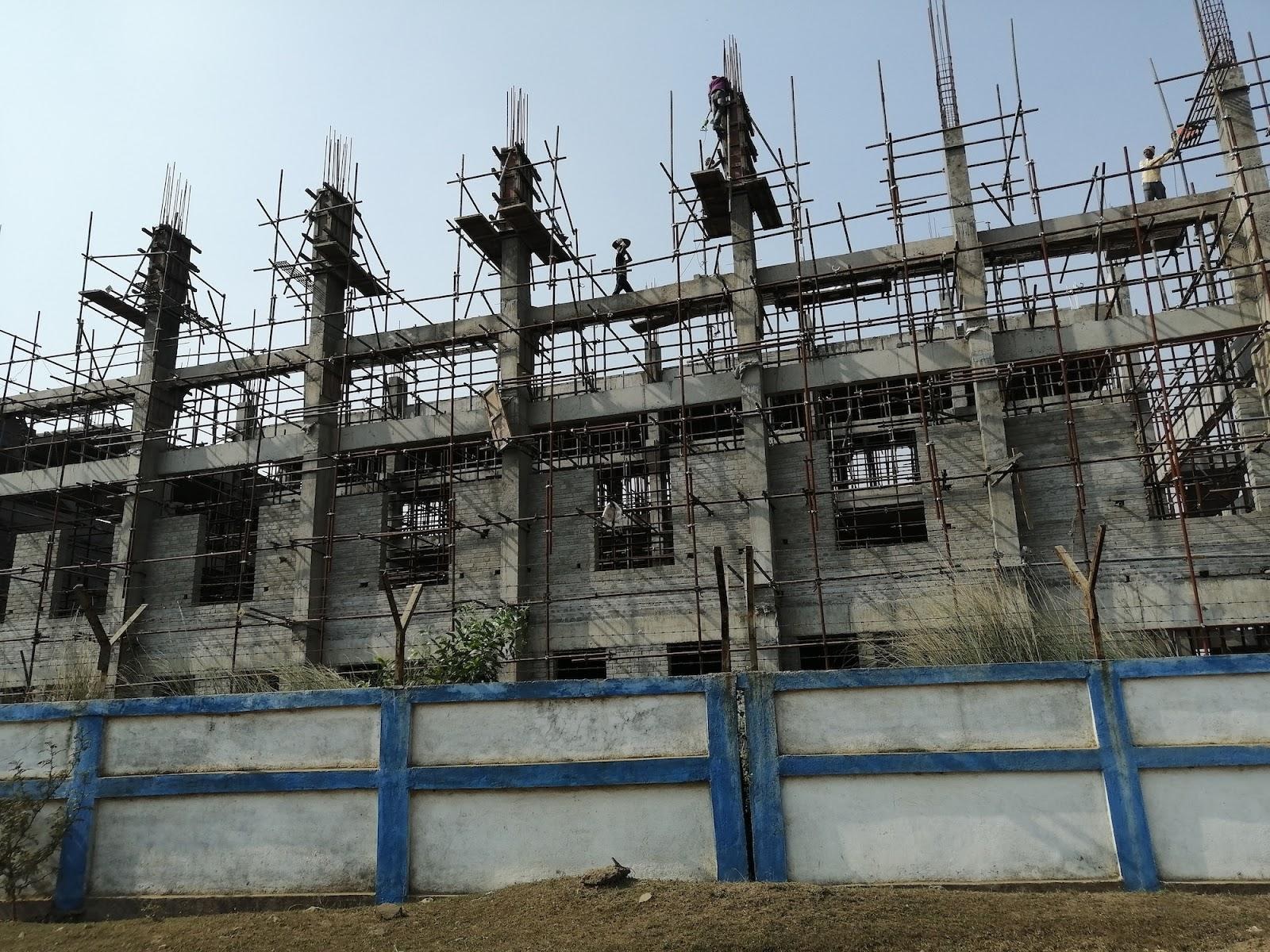
A WBPCDL office under construction
Swaraj Das questions the legality of the government’s decision. “On what basis are they starting this project? They have not yet submitted the EIA report,” he observes, referring to the environmental impact assessment required for projects of this size.
Hitting out at the nine-member state committee led by actor-director Parambrata Chattopadhyay and including several civil society members Das says, “It’s a shame that the buddhijibis [intellectuals] who had rallied behind Mamata Banerjee during the Singur and Nandigram movements are silent today when the same person is going against the Constitution.”
The committee was formed to convince local residents about the West Bengal government’s proposed coal mine and pave the way for peaceful negotiation between all parties involved. The committee members, led by Chattopadhyay, have made few visits to the region in recent times.
“This coal mine project also violates the Paris Climate Accord and the COP26, where a global call to have net zero carbon emissions in near future was given,” adds Das. Notably, India’s existing coal-based power plants generate 2.5% of global greenhouse gas emissions, amounting to 1.1 gigatonnes of carbon dioxide every year. A full third of India’s GHG emissions and almost half its fuel-related CO2 emissions are from coal fired thermal power plants.
Citing the concerns raised by the GSI and the hazardous effects that the Deocha-Pachami coal mine may have on the region’s ecosystem, Khokon Mardi says that activists like him will continue to oppose the project, especially if the open cast process is followed. “We will not allow open cast mining at any cost. Underground mining will at least reduce damage on environment and local Adivasis.”
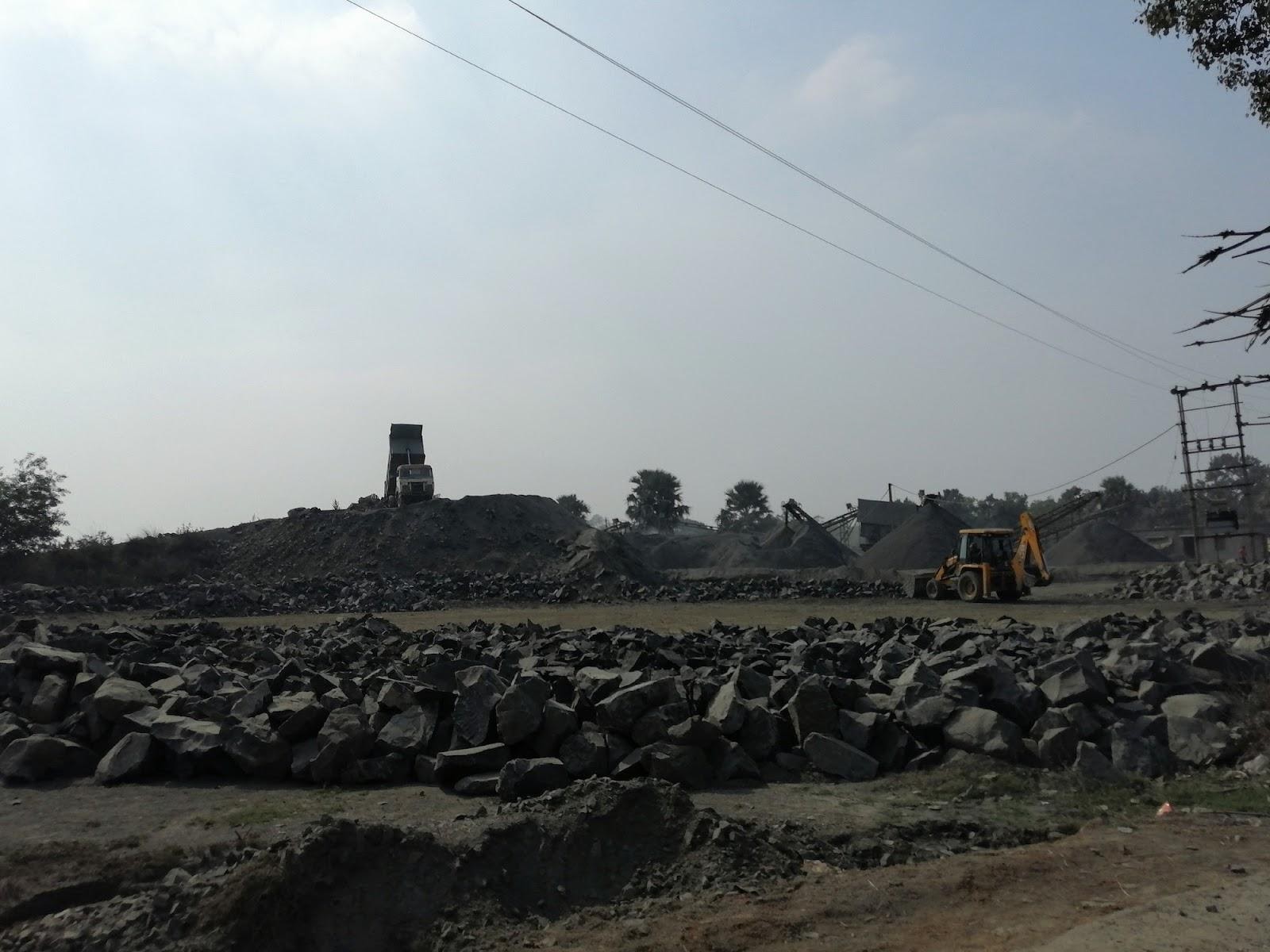
The governing Trinamool Congress recently held a rally in support of the mine in December in Dewanganj. At the end of the rally TMC cadres allegedly attacked around 100 Indigenous women who were there to resist the party event. The party, however, alleged that tribal women had attacked its procession. The TMC rally was reportedly organised to protest an earlier CPM-led ‘Save Democracy’ event. Led by Rajya Sabha MP Bikash Ranjan Bhattacharya, the Communist party had quite ironically called for armed resistance to protect Adivasis’ land from the proposed mine.
“We do not want to miss the opportunity to use the tribal people’s fear of getting evicted from their ancestral property. This is the same tool Mamata used in Nandigram and Singur against our government’s land acquisition policy and dislodged us. Now, her government is talking about eviction and we have adopted the path she had chosen,” an unnamed CPI(M) leader was quoted as saying in a news report.
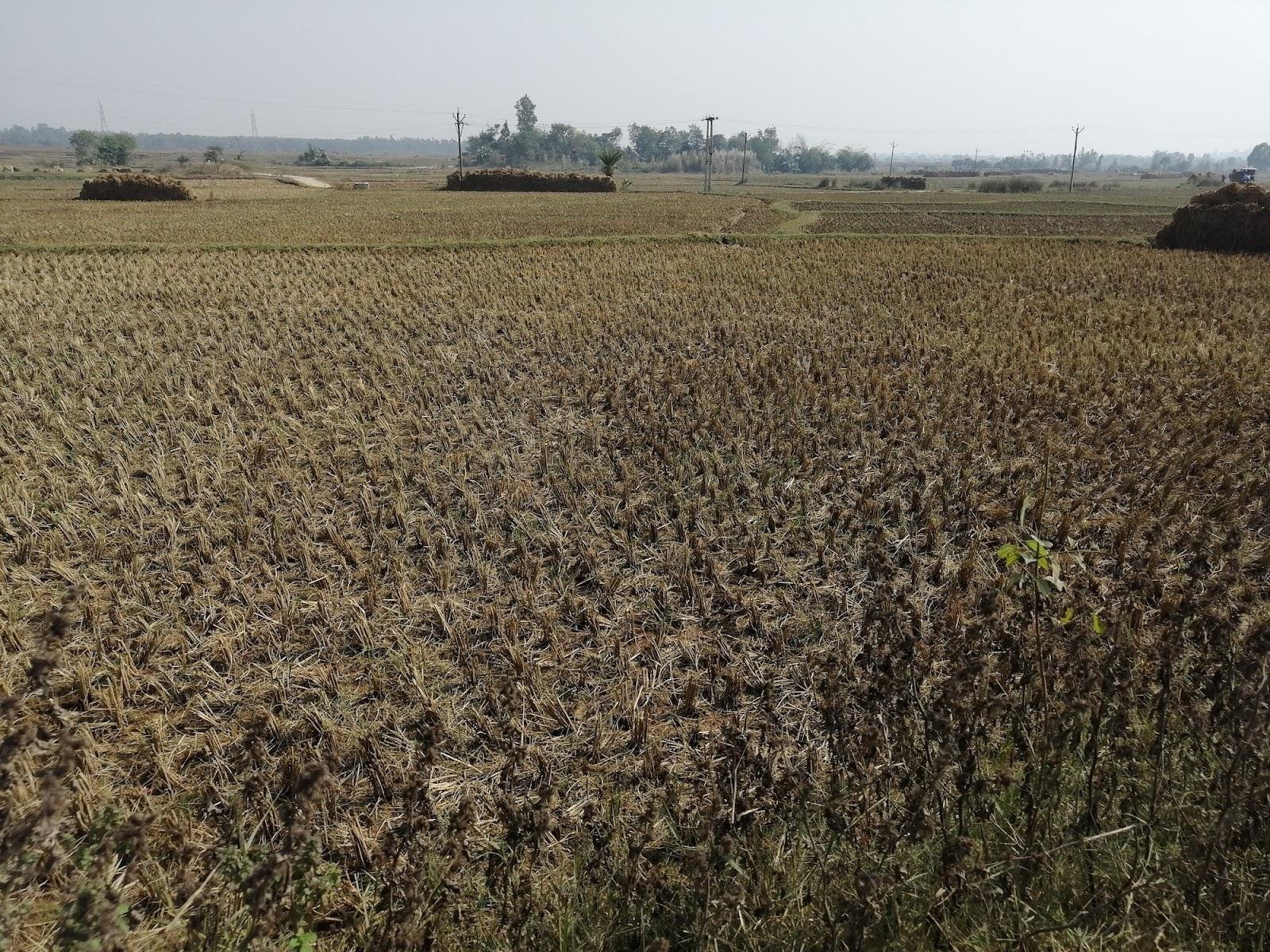
Meanwhile, Maoist posters were also seen in Harinshinga in the last week of December. “Hum log aapke sath hain (We are with you),” the posters say, according to a report. It is perhaps the first instance that Maoists have actively got involved in the Indigenous movement against the Deocha-Pachami and Dewanganj-Harinsingha coal blocks, which fall right along the Jharkhand border.
As the people of Deocha Pachami region stare at a volatile future, local resident R Tudu, a graduate, explains an Adivasi=Indigenous perspective. “We are sons of the soil. We cannot be dragged away from our land so easily.” The 30 year old has barely finished speaking when his neighbour in Dewanganj, Kalu Tudu, interrupts in broken Bengali, “Sonar Bangla ko koylar Bangla hote debone.” We will not let golden Bengal become coal Bengal.




